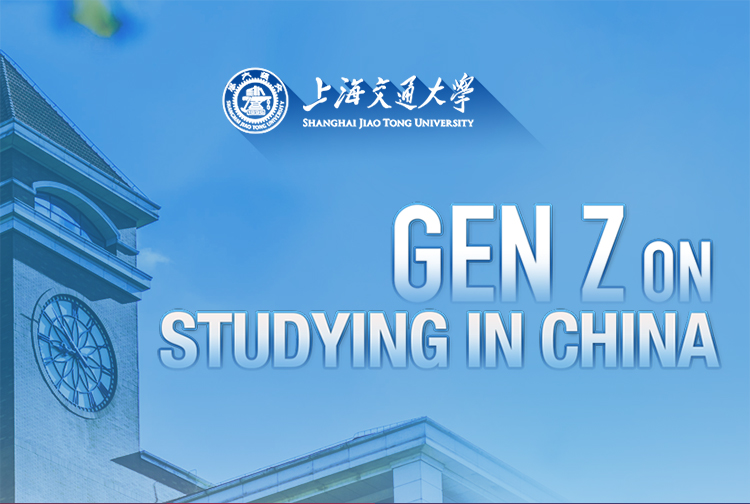PhD student from America digs deep into traditional Chinese architecture

Editor’s Note: Abraham Zamcheck (American) obtained his bachelor’s degree in East Asian Studies and Master's degree in Urban Planning from Harvard. He has another Master’s degree in Logistical Engineering at Massachusetts Institute of Technology (MIT). Supervised by Ruan Xing, dean and Guangqi Chair professor, Abraham is now a PhD student at the School of Design, Shanghai Jiao Tong University (SJTU). His research focuses on historical architecture and planning in late imperial and modern China as well as modular construction, and supply chain/logistics. He plans to research and lecture about the history, form, and applications of vernacular Chinese architecture and planning as well as the history of Chinese art, architecture and gardens to the international audience.
Why Architecture?
Why study and research Chinese traditional architecture? The field of Chinese traditional architecture shares much in common with ancient architectural traditions from around the world. It shows the striving of humanity to fulfil the basic requirements of shelter and other social needs given earlier forms of technology and architectural practice. While reflecting on these universal human endeavors, one cannot understand a particular architectural tradition without a relatively deep understanding of that place’s culture and history. And one must have a deep interest and appreciation for that culture to study it so closely and for such a length of time. I would think this applies to me and my study of traditional Chinese architecture.
When I first studied history, I became interested in architectural history because of its concrete nature. When examining old structures and relics, the mysteries of the past stare us in the face. There are many influences that reduce history to a simple message or soundbite. But architecture is three-dimensional by nature, so for those honest about what they are looking at and studying, structures provide a constant wake-up call to analyze material reality in its many permutations and facets. Relatedly, when in college, I first learned basic ideas about Chinese history from lectures, essays and books. At the time, I benefitted from a trend in the field of Chinese history that emphasized looking at “local history”, studies that inevitably touched upon the question of architecture. But I knew I really didn’t understand architecture. This alerted me that many of the ideas I learned in class about history were just a starting point, and I needed to establish a stronger foundation. Architectural history provides means to build such a foundation. I don't know of any better or more fascinating method except for this arduous path.
“Every Journey Begins with a Single Step”
The greatest scholars in the field acknowledge that it is a very difficult area of study, requiring a strong background in Chinese culture, history, and literature, as well as that in architecture and engineering principles. The most learned scholars of Chinese classical humanities strived for many years before becoming fluent in the various components, terminology, and historical trends of old structures and building techniques. Given the fast-paced demands of today’s society, often younger scholars have trouble devoting the time necessary to making headway in the field accomplished by the foremost scholars in the field such as Liang Sicheng, Liu Dunzhen, Yang Hongxun, Chen Mingda and Fu Xinian. Needless to say, as a foreigner and non-native speaker, I must overcome more additional obstacles.
At the same time, I have found there are many scholars in China quite up to the task, and many opportunities for good work as long as one is humble, earnest, patient, consistent, and not too swayed by this or that fad in modern culture and academia. As the Chinese saying goes, A journey of a thousand miles begins with a single step(“千里之行,始于足下”). And what’s unique about the field of traditional Chinese architecture is that there are giants who have contributed so much in the 20th century for us to build on. So, as an outsider, I must start from the first step, on a journey that has already made tremendous progress. At the same time, there is a wealth of new archeological findings to integrate into the field, which is very exciting for my study.
I don’t think there is quite an equivalence to the study of traditional Chinese architecture in other architectural traditions. And this in part reflects the unique path of modern Chinese history, and the great struggles in the process of establishing the new nation. This included battles along the intellectual front, where scholars like Liang Sicheng, Lin Huiyin and their colleagues had to overcome adversities in the most difficult circumstances during Japan’s invasion of China to race against time and research historic structures in the hinterland, many of which were destroyed in the ensuing war. I think recognition of the general historical contours of the research of Chinese architectural history can be quite helpful for the study itself.
But beyond the important task of recognizing the important contributions and richness of Chinese culture accomplished through such study, there has always been a drive in the field to find ways for the architectural tradition of the past to serve the present and future. It provides enormous insight for the future of design and planning. Of course, the social basis that traditional architecture served has transformed, and new technologies and materials are available now to builders. But the delicacy and modularity of traditional Chinese architecture remain as a great source of inspiration for future building and engineering methods in China and beyond, as long as there is the patience to learn and practice.
Relatedly, we can understand present challenges facing the global building industry through understanding the development of Chinese architecture itself. For example, Chinese architecture experienced a leap forward in the large scale of temple construction during the Sui and Tang dynasties. By the Tang Dynasty, many of the innovations of the previous era were standardized which was necessary because of the rapid construction of many official structures to support the rich political and economic establishment of the time. Such standardization was good for architecture reservation but resulted in blocked transmission of other engineering techniques and innovations that had previously flourished. This relationship between innovation and standardization has enormous implications for understanding both Chinese history and human history, as well as the technological strengths and limitations of the present.
In addition to the above attributes, there has been a growing interest in traditional architecture from the large number of hobbyists and self-taught scholars who have in recent years become tremendously important in the study of covered bridges in China, in particular in Taishun and neighboring counties. Their enthusiastic efforts have been a consistent source of inspiration and hope to me and my mentors which is very important to a vibrant area of study. There truly is a mass interest in the field, as mirrored in other areas of Chinese cultural studies, such as Chinese classical literature, poetry, and music. But the difference for this part is that traditional Chinese architecture is a living tradition. For instance, villagers in Qingyuan and Taishun often come together to build or rebuild covered bridges based on the knowledge they received from past generations. Other examples are that in many places, rural villagers still live in historic structures, many of which are still quite functionable to this day. When in college, I was fortunate to teach English in a village in Southern Anhui. During the time, I lived with a family in a Hui-style manor residence. The structure, initially built on behalf of wealthy merchants during the Ming and Qing dynasties with its high ceilings and open courtyard, was remarkably cool in the summer. The buildings had housed the farmers and craftspeople for generations, and building techniques were also passed down to the villagers, enabling them to maintain the structures themselves.
It's natural for people to have some sort of affection for such traditional structures, same as the respect for the elderly. They are the products of the wisdom of our ancestors, who used the accumulated knowledge of past generations for the service of future, most often a future that extended far beyond their lifetimes, as if to show their care for the young. Some of the foundational academic works in Chinese traditional architecture has been conducted through interviews of prominent bridge builders, something Liang Sicheng himself did in his earlier research on the terminology and techniques used by builders who repaired the buildings in Beijing's Forbidden City.
Presenter of Cross-cultural Dialogues
My interest in present studies and research in China is a product as well of my study of Chinese history in the U.S. where I benefitted from teachers who themselves devoted professional lives to the study of Chinese history and culture. At the same time, inevitably, studying Chinese history and culture from afar, outside the centers of intellectual culture and debate in China presents significant limitations compared to studying traditional architecture on-site and first-hand .
Meanwhile, cross-cultural scholarship is essential in this field. For example, Liang Sicheng conducted foundational studies at the University of Pennsylvania during the 1920s, which when combined with the support of his father in Chinese culture and history allowed him to pioneer a framework for understanding the field which has reverberated to the present. Liang's studies at the University of Pennsylvania themselves were informed in large part by the anti-traditionalist approach to architecture spearheaded by Eugène Viollet-le-Duc in France, transmitted in part through the influence of the professor of design at the University of Pennsylvania, Paul Philippe Cret. Later, Wilma Fairbank, wife of noted professor of Chinese studies strived to publish Liang's work to the western audience in the landmark text, A Pictorial History of Chinese Architecture.
In some ways I see work in the field as part of this continuing dialogue, sparked by the rigorous efforts of such outstanding personalities in the past. This dialogue is carried on by many individuals in China who have not lost sight of the promising potential the field has to offer humanity. It is a great privilege to take part in such an undertaking.






